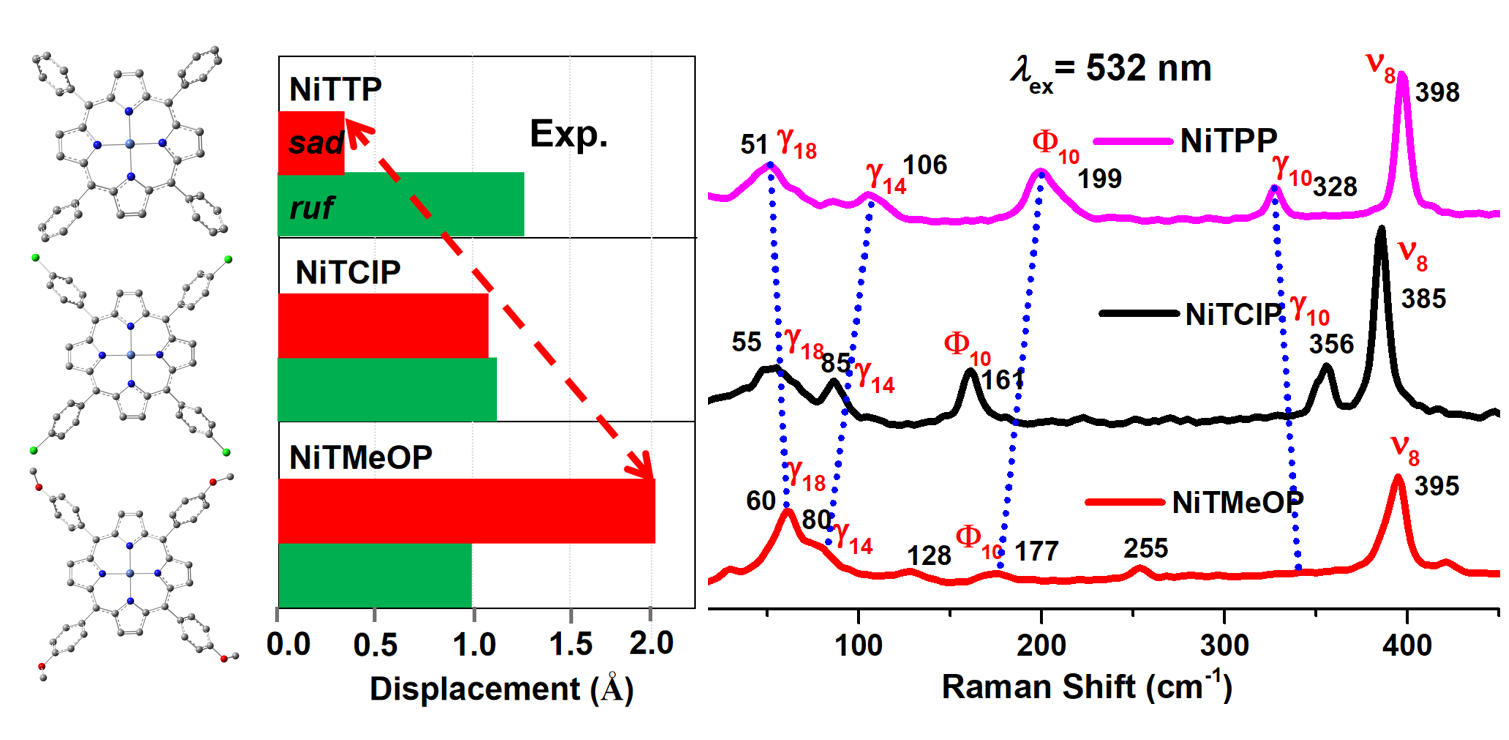A research team led by Dr. HUANG Qing from the Hefei Institutes of Physical Science of the Chinese Academy of Sciences has developed a new method using low-frequency Raman spectroscopy to detect extremely subtle changes in the structure of Porphyrin molecules - changes that traditional techniques often fail to capture.
The results were published in Spectrochimica Acta Part A: Molecular and Biomolecular Spectroscopy.
The tiny, out-of-plane (OOP) deformations of metalloporphyrin molecules are important for the biological functions of many enzymes. However, these deformations are too small and vary slightly between molecules, making them hard to detect using traditional methods.
In contrast, resonance Raman spectroscopy offers a more effective means of identifying structural features in such molecules. yet, until now, the relationship between specific deformations and the shifts in Raman peak frequencies has remained unclear, due to the complexity of the molecular interactions and the difficulty of measuring low-frequency Raman signals.
In this study, the team focused on nickel porphyrin as a model molecule and used density functional theory calculations to explore the correlation between two biologically relevant deformations (ruffling and saddling) and Raman spectral shifts.
The researchers then applied their method to three different types of nickel porphyrins, successfully capturing Raman spectra with frequencies as low as around 10 cm⁻¹, which revealed distinct patterns.
They found that all three porphyrins showed similar ruffling deformations, with only small differences in their saddling deformations. Most importantly, they discovered that the shift in a particular Raman peak (the γ18 peak) could be directly linked to the degree of saddling deformation in these molecules. This relationship means that the γ18 peak can now serve as a reliable indicator for detecting subtle structural changes in porphyrins.
This study not only shows how low-frequency Raman shifts can detect OOP deformations in porphyrin molecules caused by environmental changes, but also provides a useful tool to understand how these deformations affect their biological functions.

Identification of porphyrin ruffling deformation changes by low-frequency Raman spectroscopy (Image by WANG Shenhao)





